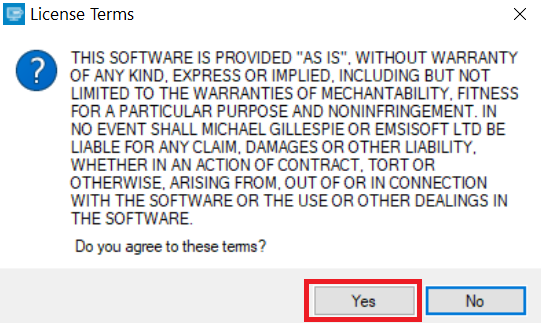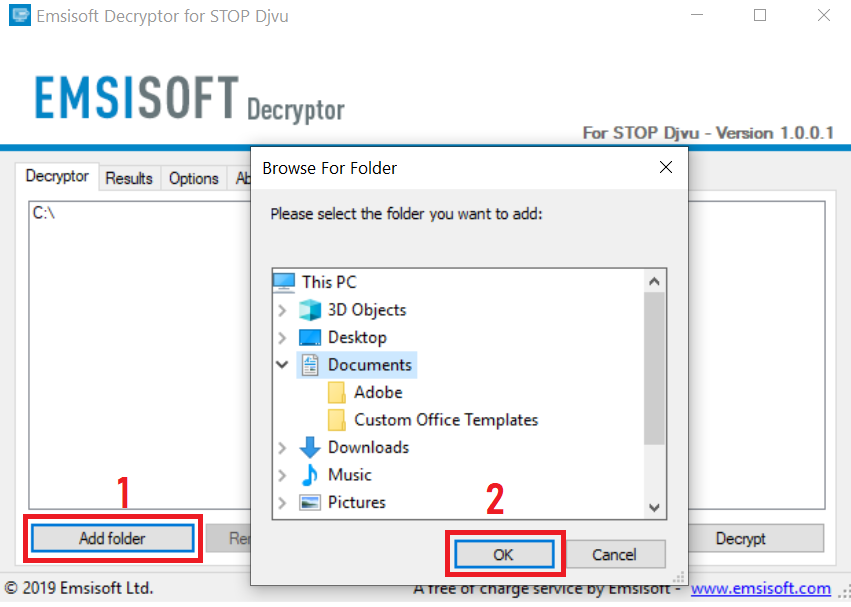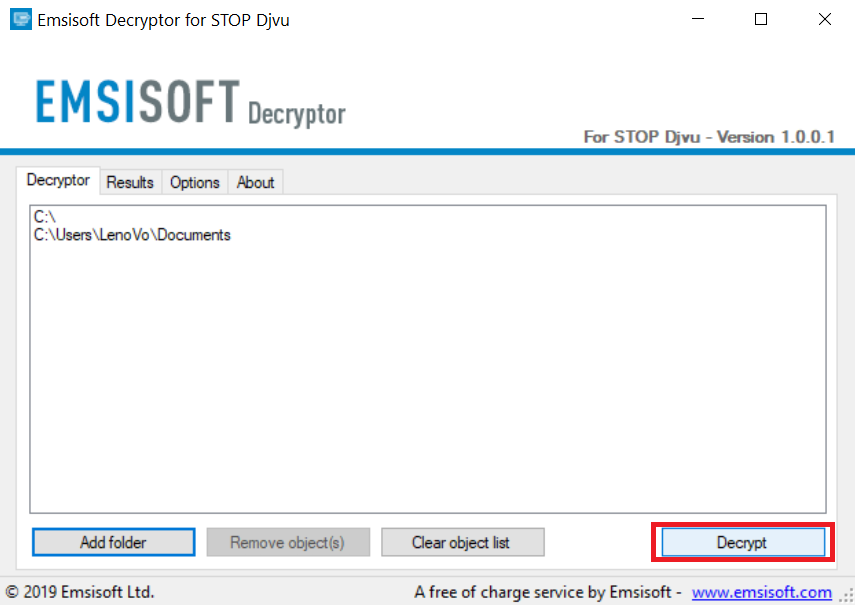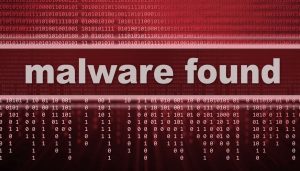LEAKS Ransomware
The name LEAKS is given to a ransomware program that targets company networks and corporate data. This vicious software has been developed to compromise networks security and lock files stored on infected devices.
Its complex behavior enables it to leave infected systems extremely vulnerable to further malware attacks. Unauthorized access to the infected systems is also possible.
To encrypt personal files, LEAKS ransomware uses military-grade ciphers. The process leaves the data stored by various files out of reach. Encrypted files can be recognized by the specific extension .LEAKS as the ransomware appends it to their original names.
According to the information shown by LEAKS’ ransom note hackers have a decryption tool which they state to be capable of restoring .LEAKS files. But they will demand a large amount of money as a ransom fee. They try to threaten victims by declaring to leak publicly obtained sensitive data.
In this article, you can see how to isolate malicious/harmful files and remove them from the infected system. This step will guarantee the security of the compromised device.

LEAKS Summary
| Name | LEAKS also known as Gen:Variant.Ransom.GoRansom.3 (BitDefender), UDS:Trojan.Win32.Generic (Kaspersky), Ransom:Win32/NefilimGo.PB!MTB (Microsoft) |
| Type | Ransomware, Cryptovirus |
| Malicious Extension | .LEAKS |
| Ransom Note | LEAKS!!!DANGER.txt |
| Short Description | Severe malware that utilizes complex cipher algorithms to encrypt valualbe files stored on computers it attacks. Then it extorts a ransom fee from victims. Hackers threaten to publish obtained data publicly in case that victims deny to follow their instructions. |
| Symptoms | The ransomware encrypts files and renames them with the extension .LEAKS. Its ransom message appears on infected machines to extort a ransom payment for .LEAKS files recovery. |
| Distribution Method | Spam Emails, Email Attachments, Freeware Bundles, Torrent Files |
| Detection Tool |
See If Your System Has Been Affected by Malware Download
Malware Removal Tool
|
LEAKS Ransomware – How Does It Infect Systems and What Impact Does It Cause?
LEAKS ransomware infection aims to obtain access to corporate networks by avoiding being detected by users as well as by any active security measures.
For this purpose, its infection file could be hidden in freeware installers, email attachments, web pages opened by misleading advertisements, fake software update and other. LockBit is another ransomware that has recently hit the global tech consultancy firm Accenture.
Commonly, hackers use the malspam technique for the distribution of ransomware threats like LEAKS. Malspam is a technique realized via malicious emails that try to deliver and activate harmful scripts, apps, and Trojans. Various email templates of legitimate services may be misused by hackers to trick people to download a dangerous file or open a hacked web page.
Note. Pay attention to all details of every email you receive, open, and interact with. Before you download a file attachment or open a presented link make sure that the email address, sender, and text message are legitimate, right, and grammatically correct. These tiny details may help you to stop the malicious intent of the email and prevent falling victims to devastating ransomware infections like LEAKS.
The moment LEAKS ransomware loads on an operating system, it initiates various types of vicious operations. The activation of all its malicious files will lead to the corruption of essential system security settings as well as stored data. Unfortunately, some of the operations could enable it to evade the detection of any active security measures and obtain administrative rights.
Then it can misuse system functionalities and eventually reach the data encryption phase of the attack. The threat is likely to encode valuable corporate files and leaves them completely inaccessible. All files that appear with the .LEAKS extension appended to their original names are encoded with military-grade cipher algorithm.
This devastating impact is used by hackers who aim to force victims to pay a hefty ransom fee for the decryption tool and keys. That’s why LEAKS ransomware drops a ransom note and loads it on the screen. The note is stored by the file LEAKS!!!DANGER.txt and all it reads is:
Two things have happened to your company.
==============================================
Gigabytes of archived files that we deemed valuable or sensitive were downloaded from your network to a secure location.
When you contact us we will tell you how much data was downloaded and can provide extensive proof of the data extraction.
You can analyze the type of the data we download on our websites.
If you do not contact us we will start leaking the data periodically in parts.
==============================================
We have also encrypted files on your computers with military grade algorithms.
If you don’t have extensive backups the only way to retrieve your data is with our software.
Restoration of your data with our software requires a private key which only we possess.
==============================================
To confirm that our decryption software works send 2 encrypted files from random computers to us via email.
You will receive further instructions after you send us the test files.
We will make sure you retrieve your data swiftly and securely and your data that we downloaded will be securely deleted when our demands are met.
If we do not come to an agreement your data will be leaked on this website.Website: hxxp://corpleaks.net
TOR link: hxxp://hxt254aygrsziejn.onionContact us via email:
Dwightschuh@tutanota.com
Joannbeavers@protonmail.com
Ralphshaver@onionmail.org
We know that sensitive data is endangered and could be leaked publicly by hackers. Still, a ransom payment is an action which security experts recommend against.
Still, one thing is sure, all infected machines should be secured by the complete removal of all LEAKS ransomware virus files and components. For this purpose, we have prepared a detailed ransomware removal guide. You can find all the steps below.

Remove LEAKS Ransomware Virus and Attempt to Restore Data
The so-called LEAKS cryptovirus has complex code that is capable of damaging both essential system settings and valuable data. So the only way to use a system infected by this ransomware securely again is to remove all harmful files added by the ransomware. For this purpose, you could follow our step-by-step removal guide.
In the event that you want to attempt to restore .LEAKS files with the help of alternative data recovery methods, do check the step – Try to Restore files encrypted by LEAKS Ransomware. We remind you to back up all encrypted files to an external drive before you begin with the recovery process.
- Step 1
- Step 2
- Step 3
- Step 4
- Step 5
Step 1: Scan for LEAKS with SpyHunter Anti-Malware Tool



Ransomware Automatic Removal - Video Guide
Step 2: Uninstall LEAKS and related malware from Windows
Here is a method in few easy steps that should be able to uninstall most programs. No matter if you are using Windows 10, 8, 7, Vista or XP, those steps will get the job done. Dragging the program or its folder to the recycle bin can be a very bad decision. If you do that, bits and pieces of the program are left behind, and that can lead to unstable work of your PC, errors with the file type associations and other unpleasant activities. The proper way to get a program off your computer is to Uninstall it. To do that:


 Follow the instructions above and you will successfully delete most unwanted and malicious programs.
Follow the instructions above and you will successfully delete most unwanted and malicious programs.
Step 3: Clean any registries, created by LEAKS on your computer.
The usually targeted registries of Windows machines are the following:
- HKEY_LOCAL_MACHINE\Software\Microsoft\Windows\CurrentVersion\Run
- HKEY_CURRENT_USER\Software\Microsoft\Windows\CurrentVersion\Run
- HKEY_LOCAL_MACHINE\Software\Microsoft\Windows\CurrentVersion\RunOnce
- HKEY_CURRENT_USER\Software\Microsoft\Windows\CurrentVersion\RunOnce
You can access them by opening the Windows registry editor and deleting any values, created by LEAKS there. This can happen by following the steps underneath:


 Tip: To find a virus-created value, you can right-click on it and click "Modify" to see which file it is set to run. If this is the virus file location, remove the value.
Tip: To find a virus-created value, you can right-click on it and click "Modify" to see which file it is set to run. If this is the virus file location, remove the value.
Before starting "Step 4", please boot back into Normal mode, in case you are currently in Safe Mode.
This will enable you to install and use SpyHunter 5 successfully.
Step 4: Boot Your PC In Safe Mode to isolate and remove LEAKS





Step 5: Try to Restore Files Encrypted by LEAKS.
Method 1: Use STOP Decrypter by Emsisoft.
Not all variants of this ransomware can be decrypted for free, but we have added the decryptor used by researchers that is often updated with the variants which become eventually decrypted. You can try and decrypt your files using the instructions below, but if they do not work, then unfortunately your variant of the ransomware virus is not decryptable.
Follow the instructions below to use the Emsisoft decrypter and decrypt your files for free. You can download the Emsisoft decryption tool linked here and then follow the steps provided below:
1 Right-click on the decrypter and click on Run as Administrator as shown below:

2. Agree with the license terms:

3. Click on "Add Folder" and then add the folders where you want files decrypted as shown underneath:

4. Click on "Decrypt" and wait for your files to be decoded.

Note: Credit for the decryptor goes to Emsisoft researchers who have made the breakthrough with this virus.
Method 2: Use data recovery software
Ransomware infections and LEAKS aim to encrypt your files using an encryption algorithm which may be very difficult to decrypt. This is why we have suggested a data recovery method that may help you go around direct decryption and try to restore your files. Bear in mind that this method may not be 100% effective but may also help you a little or a lot in different situations.
Simply click on the link and on the website menus on the top, choose Data Recovery - Data Recovery Wizard for Windows or Mac (depending on your OS), and then download and run the tool.
LEAKS-FAQ
What is LEAKS Ransomware?
LEAKS is a ransomware infection - the malicious software that enters your computer silently and blocks either access to the computer itself or encrypt your files.
Many ransomware viruses use sophisticated encryption algorithms to make your files inaccessible. The goal of ransomware infections is to demand that you pay a ransom payment to get access to your files back.
What Does LEAKS Ransomware Do?
Ransomware in general is a malicious software that is designed to block access to your computer or files until a ransom is paid.
Ransomware viruses can also damage your system, corrupt data and delete files, resulting in the permanent loss of important files.
How Does LEAKS Infect?
Via several ways.LEAKS Ransomware infects computers by being sent via phishing emails, containing virus attachment. This attachment is usually masked as an important document, like an invoice, bank document or even a plane ticket and it looks very convincing to users.
Another way you may become a victim of LEAKS is if you download a fake installer, crack or patch from a low reputation website or if you click on a virus link. Many users report getting a ransomware infection by downloading torrents.
How to Open .LEAKS files?
You can't without a decryptor. At this point, the .LEAKS files are encrypted. You can only open them once they are decrypted using a specific decryption key for the particular algorithm.
What to Do If a Decryptor Does Not Work?
Do not panic, and backup the files. If a decryptor did not decrypt your .LEAKS files successfully, then do not despair, because this virus is still new.
Can I Restore ".LEAKS" Files?
Yes, sometimes files can be restored. We have suggested several file recovery methods that could work if you want to restore .LEAKS files.
These methods are in no way 100% guaranteed that you will be able to get your files back. But if you have a backup, your chances of success are much greater.
How To Get Rid of LEAKS Virus?
The safest way and the most efficient one for the removal of this ransomware infection is the use a professional anti-malware program.
It will scan for and locate LEAKS ransomware and then remove it without causing any additional harm to your important .LEAKS files.
Can I Report Ransomware to Authorities?
In case your computer got infected with a ransomware infection, you can report it to the local Police departments. It can help authorities worldwide track and determine the perpetrators behind the virus that has infected your computer.
Below, we have prepared a list with government websites, where you can file a report in case you are a victim of a cybercrime:
Cyber-security authorities, responsible for handling ransomware attack reports in different regions all over the world:
Germany - Offizielles Portal der deutschen Polizei
United States - IC3 Internet Crime Complaint Centre
United Kingdom - Action Fraud Police
France - Ministère de l'Intérieur
Italy - Polizia Di Stato
Spain - Policía Nacional
Netherlands - Politie
Poland - Policja
Portugal - Polícia Judiciária
Greece - Cyber Crime Unit (Hellenic Police)
India - Mumbai Police - CyberCrime Investigation Cell
Australia - Australian High Tech Crime Center
Reports may be responded to in different timeframes, depending on your local authorities.
Can You Stop Ransomware from Encrypting Your Files?
Yes, you can prevent ransomware. The best way to do this is to ensure your computer system is updated with the latest security patches, use a reputable anti-malware program and firewall, backup your important files frequently, and avoid clicking on malicious links or downloading unknown files.
Can LEAKS Ransomware Steal Your Data?
Yes, in most cases ransomware will steal your information. It is a form of malware that steals data from a user's computer, encrypts it, and then demands a ransom in order to decrypt it.
In many cases, the malware authors or attackers will threaten to delete the data or publish it online unless the ransom is paid.
Can Ransomware Infect WiFi?
Yes, ransomware can infect WiFi networks, as malicious actors can use it to gain control of the network, steal confidential data, and lock out users. If a ransomware attack is successful, it could lead to a loss of service and/or data, and in some cases, financial losses.
Should I Pay Ransomware?
No, you should not pay ransomware extortionists. Paying them only encourages criminals and does not guarantee that the files or data will be restored. The better approach is to have a secure backup of important data and be vigilant about security in the first place.
What Happens If I Don't Pay Ransom?
If you don't pay the ransom, the hackers may still have access to your computer, data, or files and may continue to threaten to expose or delete them, or even use them to commit cybercrimes. In some cases, they may even continue to demand additional ransom payments.
Can a Ransomware Attack Be Detected?
Yes, ransomware can be detected. Anti-malware software and other advanced security tools can detect ransomware and alert the user when it is present on a machine.
It is important to stay up-to-date on the latest security measures and to keep security software updated to ensure ransomware can be detected and prevented.
Do Ransomware Criminals Get Caught?
Yes, ransomware criminals do get caught. Law enforcement agencies, such as the FBI, Interpol and others have been successful in tracking down and prosecuting ransomware criminals in the US and other countries. As ransomware threats continue to increase, so does the enforcement activity.
About the LEAKS Research
The content we publish on SensorsTechForum.com, this LEAKS how-to removal guide included, is the outcome of extensive research, hard work and our team’s devotion to help you remove the specific malware and restore your encrypted files.
How did we conduct the research on this ransomware?
Our research is based on an independent investigation. We are in contact with independent security researchers, and as such, we receive daily updates on the latest malware and ransomware definitions.
Furthermore, the research behind the LEAKS ransomware threat is backed with VirusTotal and the NoMoreRansom project.
To better understand the ransomware threat, please refer to the following articles which provide knowledgeable details.
As a site that has been dedicated to providing free removal instructions for ransomware and malware since 2014, SensorsTechForum’s recommendation is to only pay attention to trustworthy sources.
How to recognize trustworthy sources:
- Always check "About Us" web page.
- Profile of the content creator.
- Make sure that real people are behind the site and not fake names and profiles.
- Verify Facebook, LinkedIn and Twitter personal profiles.














